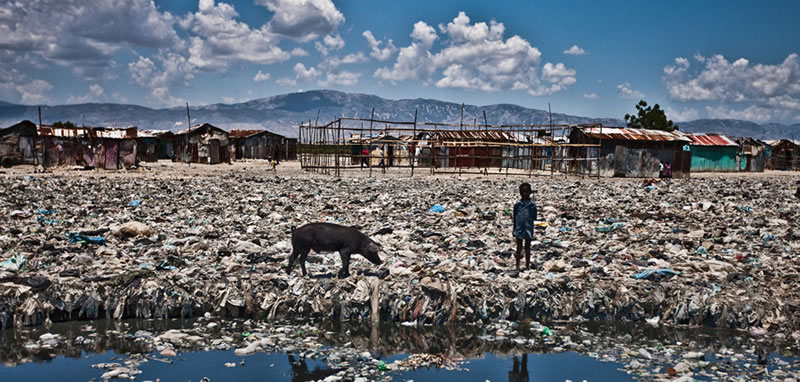ADVERTISEMENT

Haiti Slum
Here is the picture of a Haitian slum. According to the World Risk Index (2014) of the United Nations University, Haiti is the most vulnerable country in the Latin American and Caribbean region. It is regularly facing every possible kind of environmental alteration resulting regular migratory flows, making people environmental migrant. Environmental factors have a great impact on global migration flows, because people are forced to leave their home region due to sudden or long-term changes to their local environment with harsh or deteriorating conditions. Climate change, environment and migration are all interrelated. Environmental degradation and disasters generally cause migration and movement of people can also cause significant effects on the surrounding ecosystems. Frequent droughts, cyclones, hurricanes and floods in Haiti have caused significant impact in one of the most fragile environments in the world. Half of the residents of the Haitian capital city were not born there. Haiti is very much vulnerable to climate change; it needs to increase its ability to foresee and control the effects of climate change, while integrating the associated migration risks.

 Ougan Alcenat Zamor eli nouvo Nasyonal ati
Ougan Alcenat Zamor eli nouvo Nasyonal ati  Histoire D'Haiti
Histoire D'Haiti  Henri Namphy Haitian General and President , buried in...
Henri Namphy Haitian General and President , buried in...  Jack Guy Lafontant resigns as Haiti Prime Minister
Jack Guy Lafontant resigns as Haiti Prime Minister  The Petro Caribe Challenge hashtag
The Petro Caribe Challenge hashtag  Jovenel Moïse nominated Jean Henry Céant as prime minister of...
Jovenel Moïse nominated Jean Henry Céant as prime minister of...  Port-au-Prince on fire over gas prices hike
Port-au-Prince on fire over gas prices hike  Haitians, the second largest black immigrant group in the US
Haitians, the second largest black immigrant group in the US 



